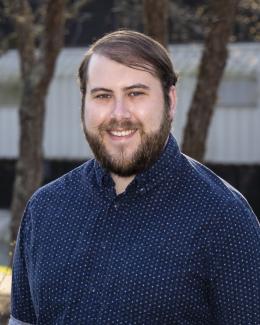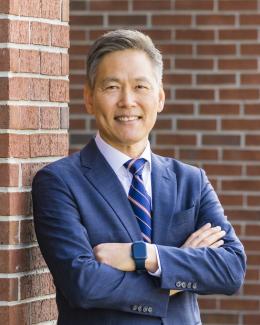Ho Nyung Lee: Delivering exceptional science through dedication and perseverance
November 6, 2017 – Some hobbies, like woodworking, require a careful eye for planning and construction. Others, like building a ship in a bottle, need a steady hand and utmost precision.
Ho Nyung Lee’s hobby may top them all: He designs and synthesizes complex functional materials with unprecedented new properties, one atom at a time.
“Science has been my career hobby rather than my life,” said Lee, leader of the Thin Films and Nanostructures Group at the Department of Energy’s Oak Ridge National Laboratory and ORNL manager of the DOE-BES Materials Science and Engineering Program.
“My passion is about continuing science,” he said. “If we do research as our hobby, then this is a fun job, right?”
Lee’s “career hobby” began as a child, when his mother gave him a science book that sparked his fascination with the big, interesting questions about the universe. He studied science throughout school and was encouraged by his teachers and advisers to follow his passion into physics research.
He learned about materials at a fundamental level and was particularly interested in condensed matter physics and research with quantum materials, such as ferromagnets, ferroelectrics and superconductors.
Lee earned his doctorate in physics from Korea University before moving to Germany to work as a postdoc at the Max Planck Institute of Microstructure Physics, where his adviser emphasized the importance of diligence in science.
“He was always telling me, ‘You actually have to focus on what you’re supposed to do, no matter what the situation,’” Lee said. “‘You may have a shortage in your funding or may face some difficult issues, but you shouldn’t stop keeping up your good research.’”
The pursuit of continual, quality research is good for both individuals and organizations, Lee said, and has guided his philosophy as a researcher and a leader at ORNL.
“This is a very good example of how you have to raise all groups,” he said. “Provide the conditions where you can focus on research and where researchers can think and move on ideas so they can challenge their career as a scientist.”
Lee joined ORNL in 2002 and found that the lab afforded him freedom and direction in equal measure. The atmosphere was competitive, but inclusive, and had the resources to investigate both fundamental research and applied technologies.
“I am a lucky person,” Lee said. “The lab has a good environment. It encourages people and makes people think about the challenging cases.”
The mix of basic and applied science is important to Lee’s work. The way we do fundamental research is not just for its own sake, he said, but is meant to get to a certain point when researchers can collaborate and combine their assets to create new types of devices and pioneer novel technology.
“At the lab, we have all the ingredients and components. It is all connected,” he said. “That’s why I like working here as a scientist. We have diverse backgrounds and skill sets which are very important for integrating science and technology together.”
Learning from failure. Lee’s research focuses on understanding the complexities of novel materials on the atomic scale and tailoring their structure to achieve new functionalities.
“Physics is about learning and discovering something you didn’t know,” Lee said. “When you see something unexpected, some exotic behavior, that is good.”
A researcher can use that finding as a launching pad to grasp the meaning behind the unpredictability. However, the journey from question to answer is rarely easy, no matter how many years you have been searching.
“Sometimes people say, ‘Eureka!’ but usually, we fail,” Lee said. “We are very well-trained for failing, yet the failure is not simply a waste, but gives us another stepping stone to move on to the next step.”
Much of materials science relies on multiple, high-end tools found in facilities such as the Spallation Neutron Source. Some experiments require researchers to invest a significant amount of time writing user proposals, preparing a beam line, performing the experiment and processing the data. Sometimes this process can take months or even years, Lee said, and cannot be accomplished without perseverance and the ability to learn from mistakes.
The hard work, long hours and everyday frustrations of scientific research are not without their payoff, though. For every disappointment, Lee said, there is an even greater victory that comes with the knowledge that your work has contributed to your field and advanced our collective knowledge.
“Science is also very rewarding in the end. You can gain a really good understanding of what you’re looking for and feel accomplished,” Lee said. “If I ask how I judge whether I’m successful in my career, I don’t know, but if I can continue in thinking about science, even after I retire, I think I’ll feel that I made my career successful.”
UT-Battelle manages ORNL for the DOE's Office of Science. The Office of Science is the single largest supporter of basic research in the physical sciences in the United States, and is working to address some of the most pressing challenges of our time. For more information, please visit http://energy.gov/science/. – By Sean Simoneau



